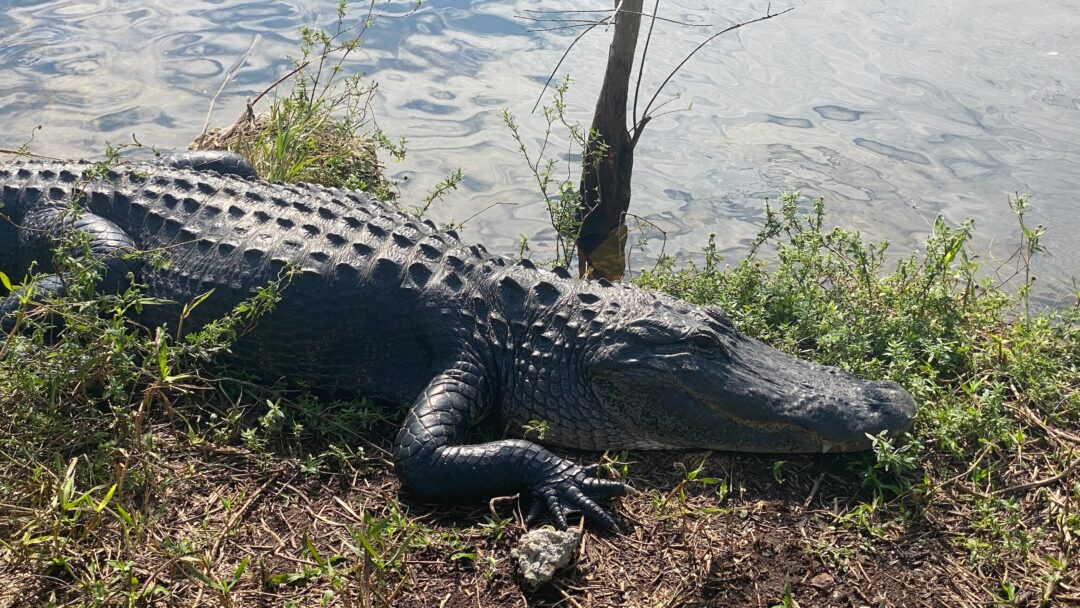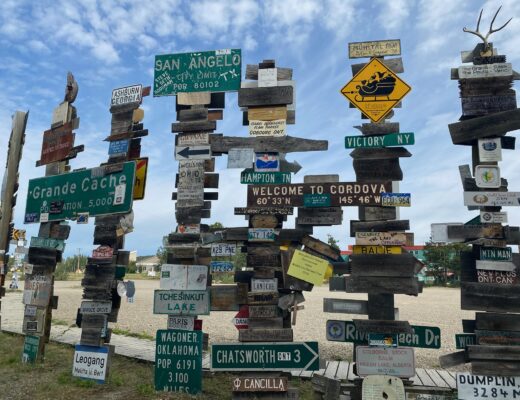Like the Creole Nature Trail in Louisiana (post here), the road driving towards our campground in Big Cypress National Preserve, Highway 41 (aka the Tamiami Trail which cuts across the state of Florida from Miami to Tampa) was built by creating canals, called “borrow ditches”, next to the side of the road and using the soil to build the road up and above the swamp. This $8M-$13M project was said to have used more than 2.6M sticks of dynamite to create the canals of this 264-mile roadway that opened in 1928!
As we drove in, on one side was the borrow ditch, now lined with tall, nearly-leafless trees filled with birds so large it was hard to comprehend how the tree’s small, outstretched branches held them up.
I don’t think mid-December is high season for birds in the area and yet, we saw so many!
It was dusk when we arrived so we didn’t get a good look at the different types of birds nor the inhabitants of the surrounding waterways, but that would change the next morning.
Well rested, Doug walked the dog, being careful to avoid the sunning alligator at lake’s edge. He also photographed this camper’s sign below, which we decided was a good test of how RV life was going (whether the sentiment seemed positive or punitive!). LOL!

Then we headed for the visitor center to learned about the many animals that inhabit the area – the yellow-beaked, great egret and multiple species of heron that hunt the shallow waters, gracefully tip-toeing among the sunning alligators; the sleek black and white diving Anhinga (also known as the “piano bird”) who spear their fish and then throw their fresh catch in the air to swallow it head first; and yes, alligators…lots and lots of alligators.
You may have heard about alligator holes – these depressions dug out by alligators in the swamp that provide an aquatic refuge for alligators and a place to nest. In the dry season, these holes provide foraging sites for wading birds, turtles, and snakes. Cue lovely nature music. Sounds cozy right? Yup…until you realize its also how the alligators survive. These self-created, little ponds (10-20 feet in diameter and a few feet deep inside the swamp) are full of both aquatic animals and others who drink there during the dry season or as the alligators call them, “lunch!”
Seeing this alligator tuck underneath was a good reminder that you don’t always know what lurks just beneath the surface. I mean…this huge guy, simply disappears!
As a reminder,
- The fastest recorded swimming speed of any human is 143 meters per minute, while the alligator can swim 536 meters per minute.
- The average female alligator is 8.2 feet long and the average male is 11.2 feet long. Plus, the largest males can weigh nearly 1000lbs (i.e. half a ton!).
- From a state of rest, alligators can jump up to 6 feet in the air – which can help them catch prey climbing a tree.
- Their brain is the size of 3 olives, but their jaws have a bite force of 2125psi (almost 3 times that of any dog and almost double that of a grizzly bear), which seems like a pretty poor combination!
- They have no natural predators, besides man.
In fairness, most of our discussions with rangers indicate that alligators are rather lazy predators, so although they can easily chase down a human, running short distances that exceed 30 miles per hour, they prefer prey they can take in one bite (chicken nugget fashion), so humans are rarely on the menu.
Some days I’m brave, but this was not one of those days. Hearing of their docile nature from the ranger did not leave me clamoring to inflate our pack raft for an up-close gator tour of the canal. There were, however, plenty of people in hard bottom kayaks that seemed to really enjoy paddling the area, but I didn’t take a before and after count.
“Some days I’m brave, but this was not one of those days.”
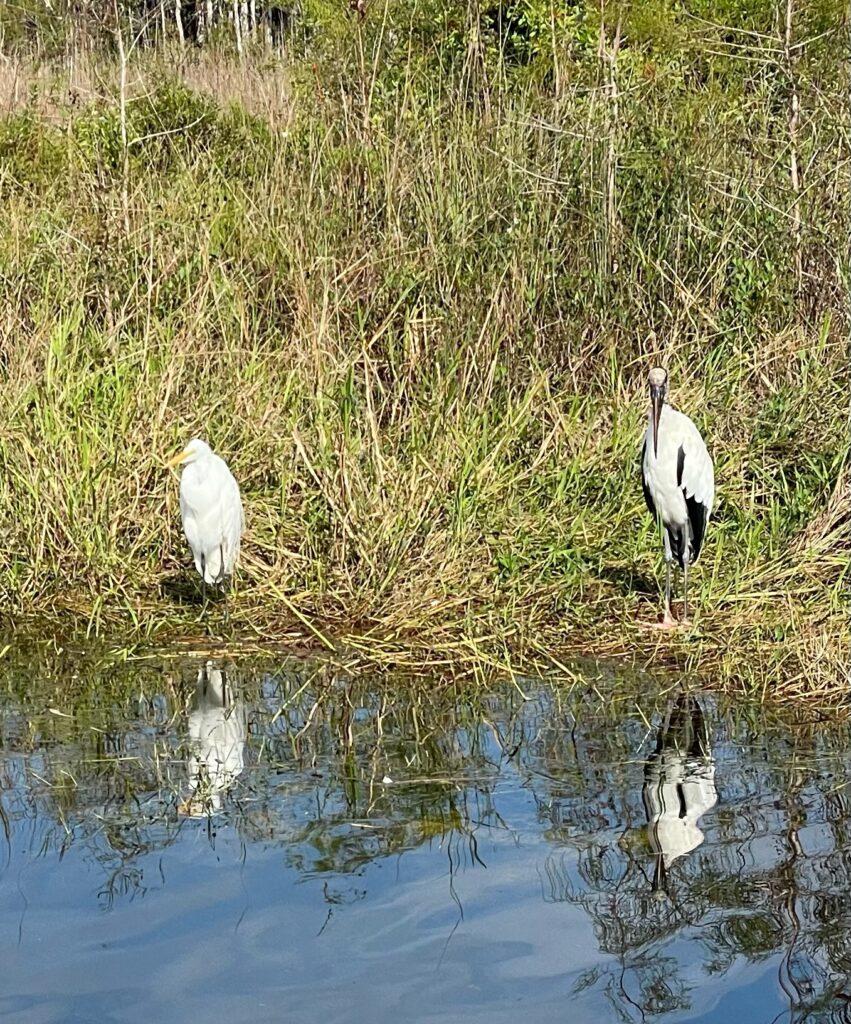
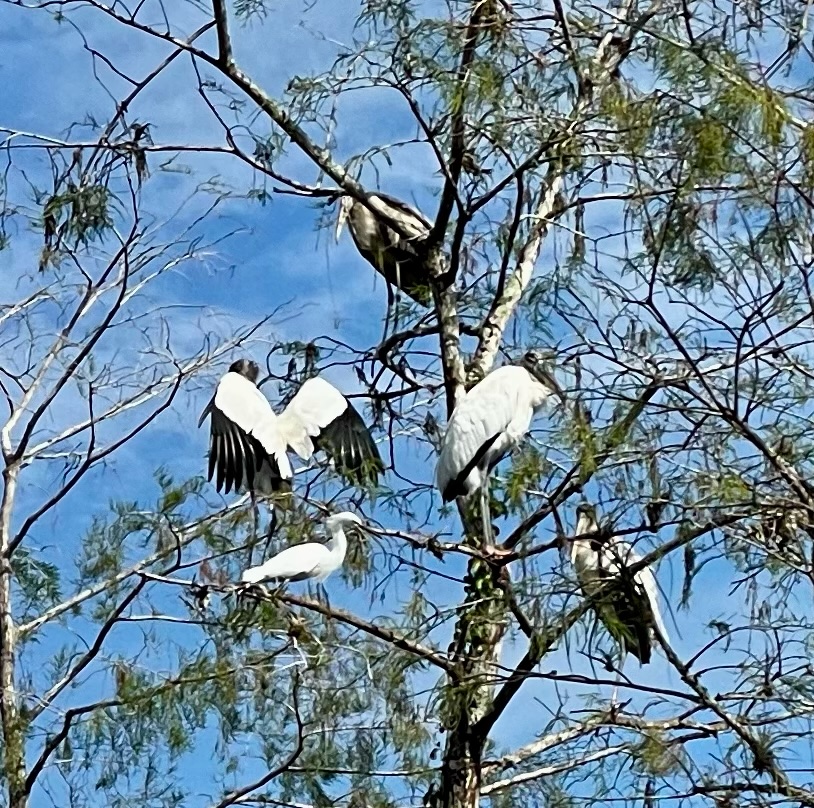
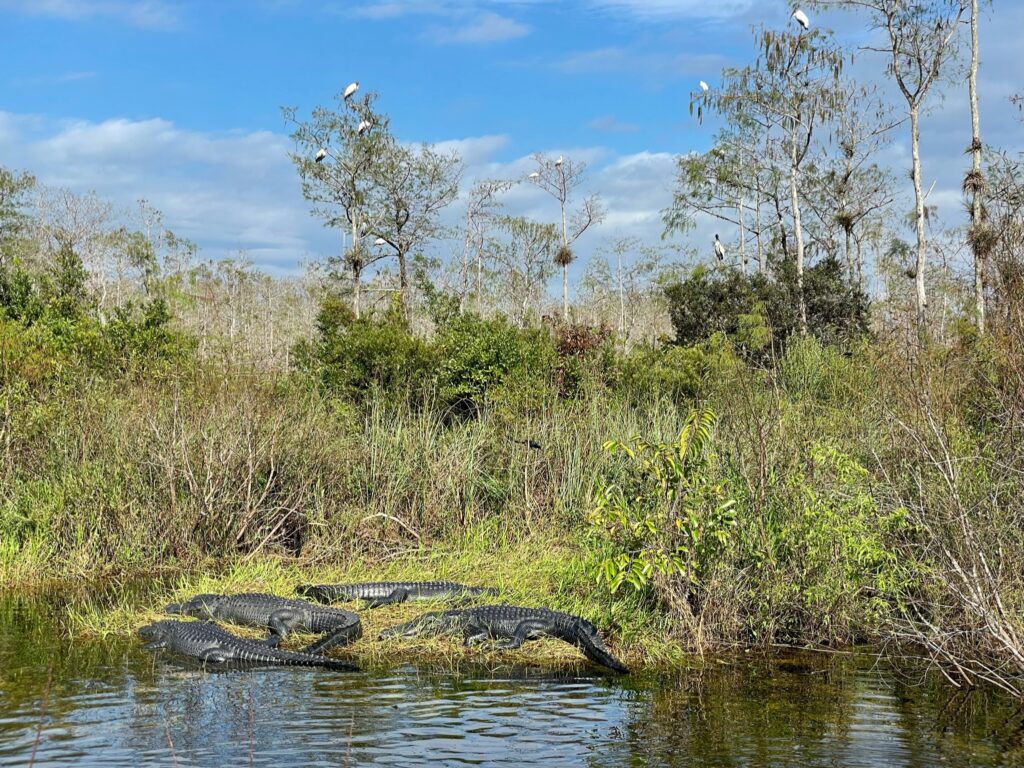
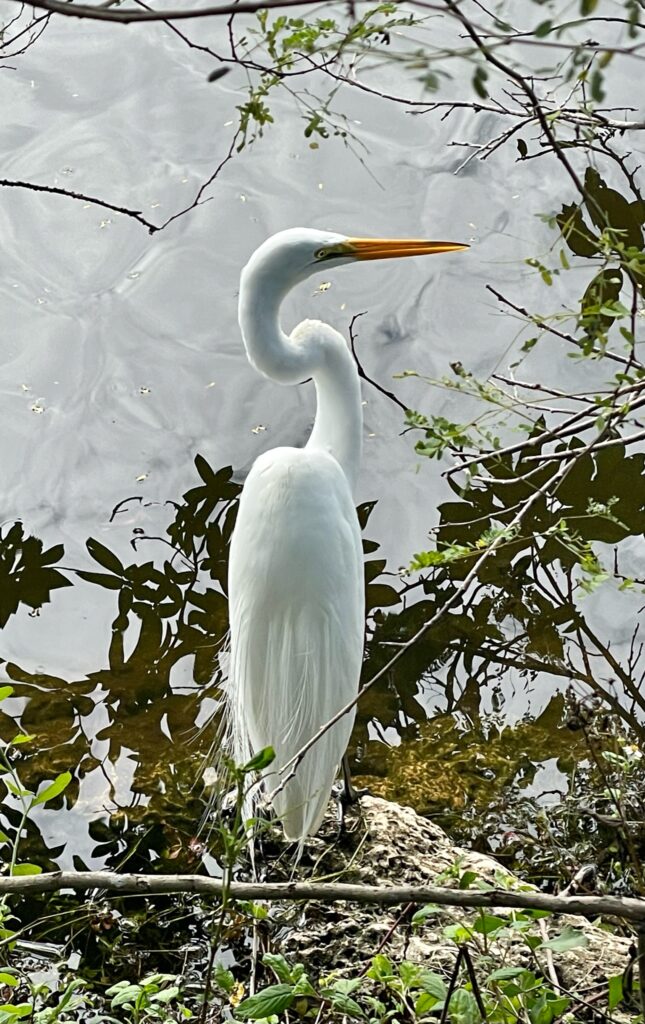
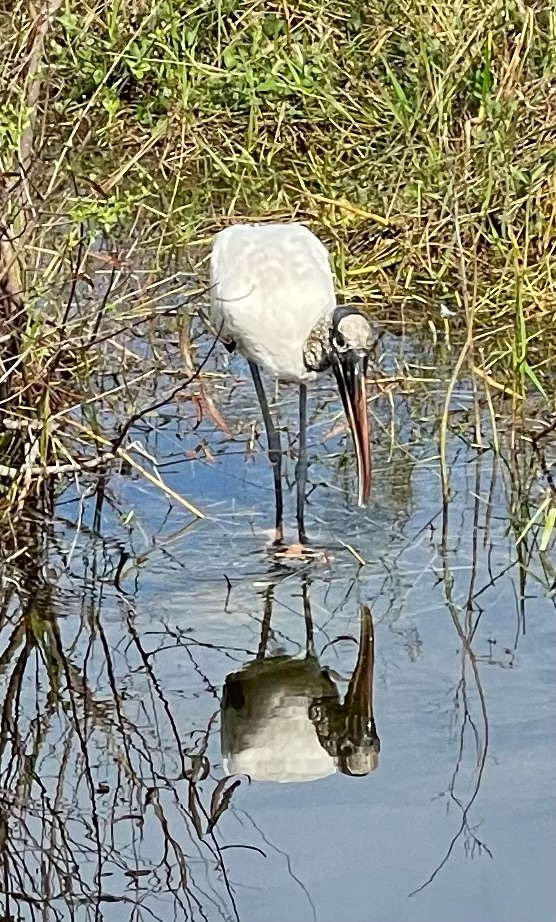
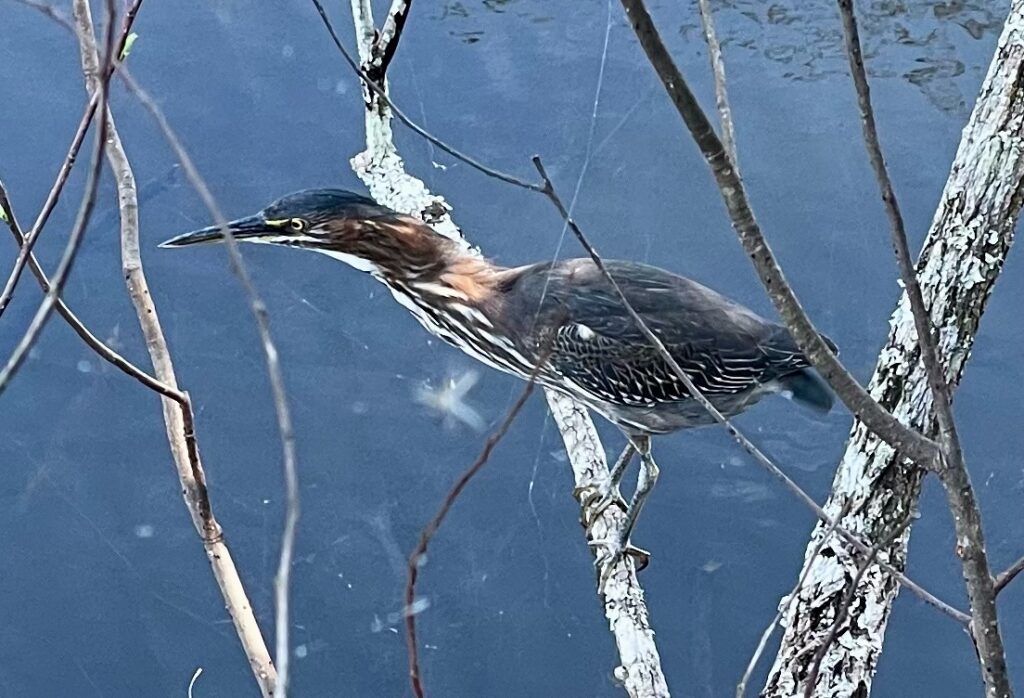
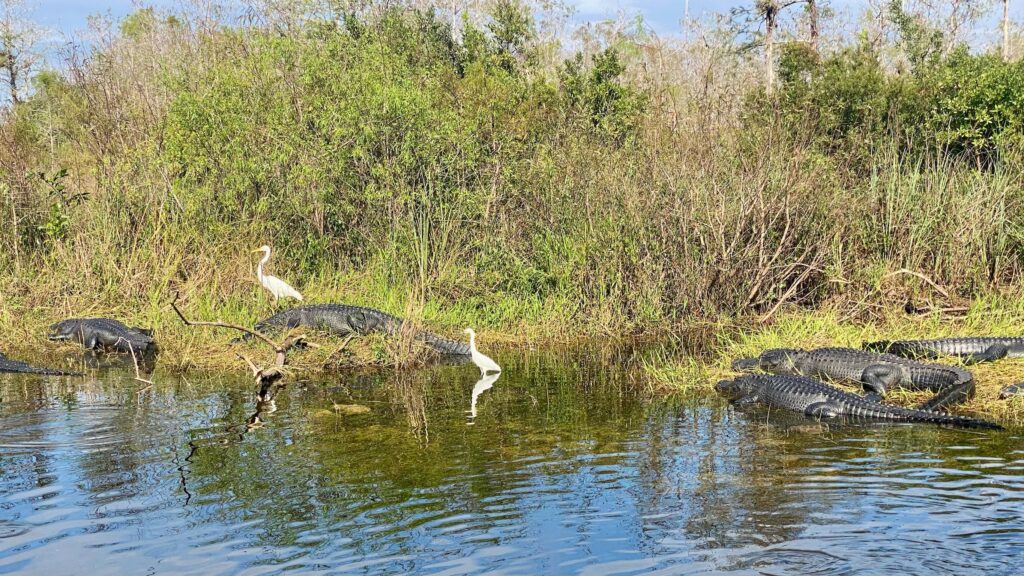
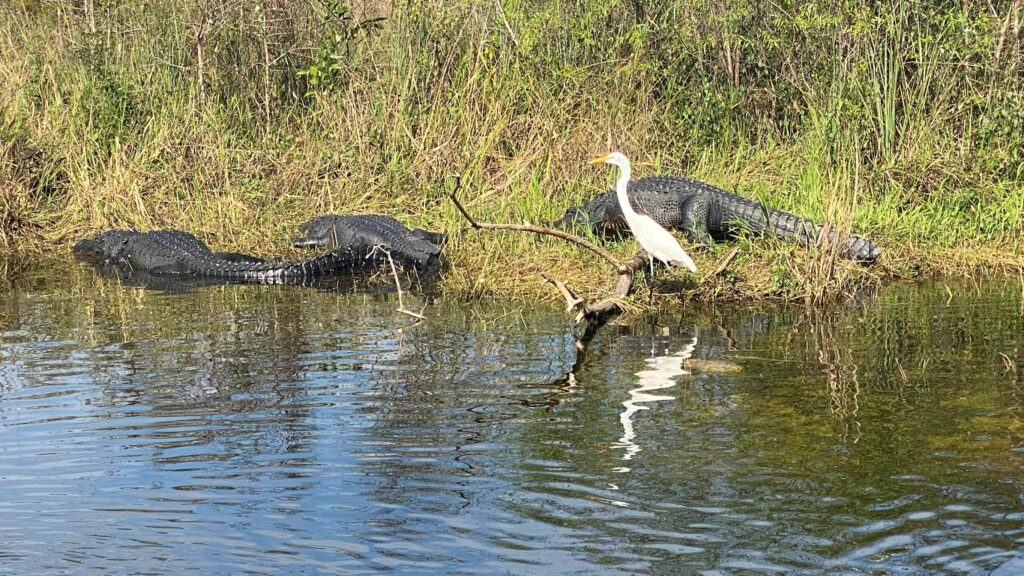
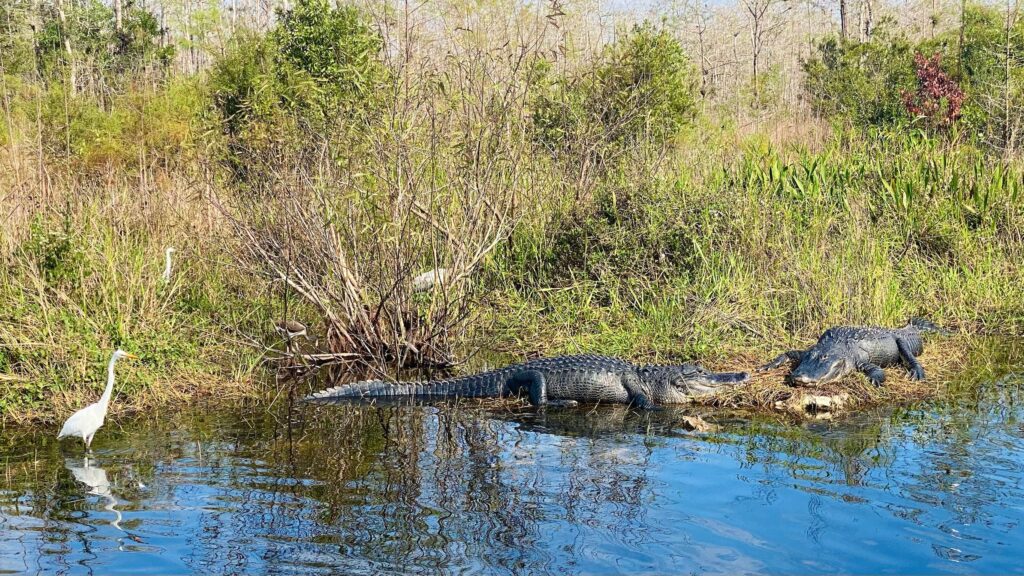
Borrow Ditch Sights By the Tamiami Highway
We spent our afternoon instead on the elevated Kirby-Sorter Boardwalk Trail. Bird watching, looking for turtles, and for alligators…albeit a safe distance above the swamp. Given that it was winter, most areas under the boardwalk were fairly dry so we didn’t see any alligators, but the birds were pretty and we saw plenty of interesting air plants that I think bloom in the spring.
We also drove a dirt road loop along some borrow ditches where we saw more birds, including the elusive pink Roseate Spoonbills (no pic available), and more alligators enjoying the warm sun.
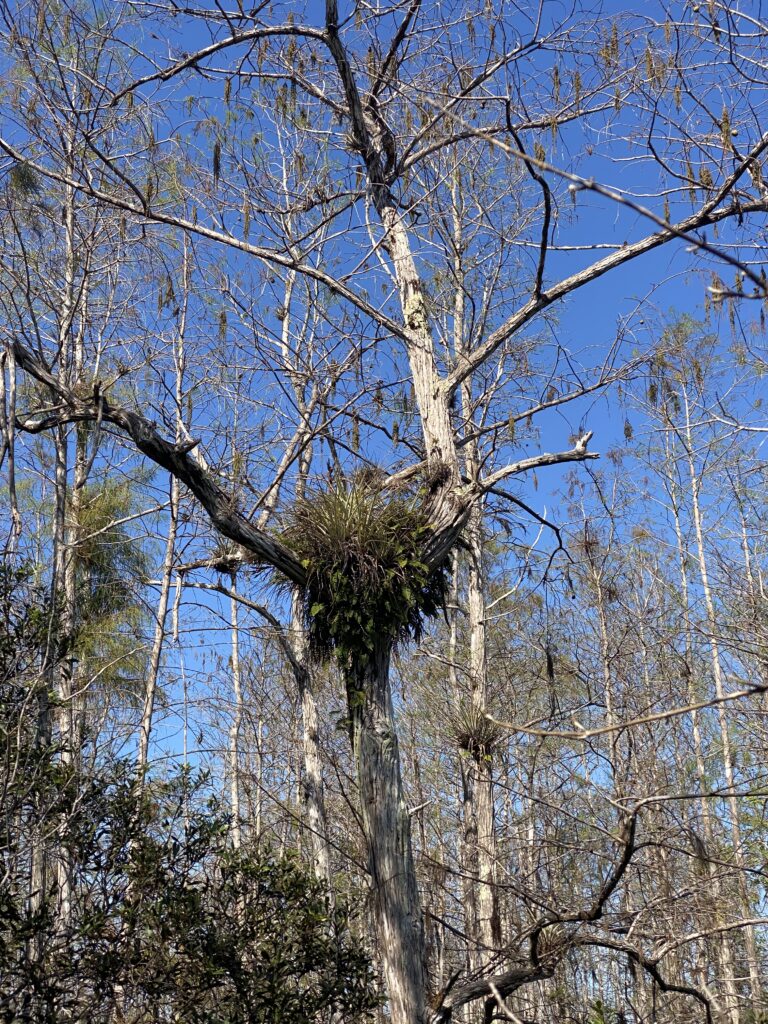
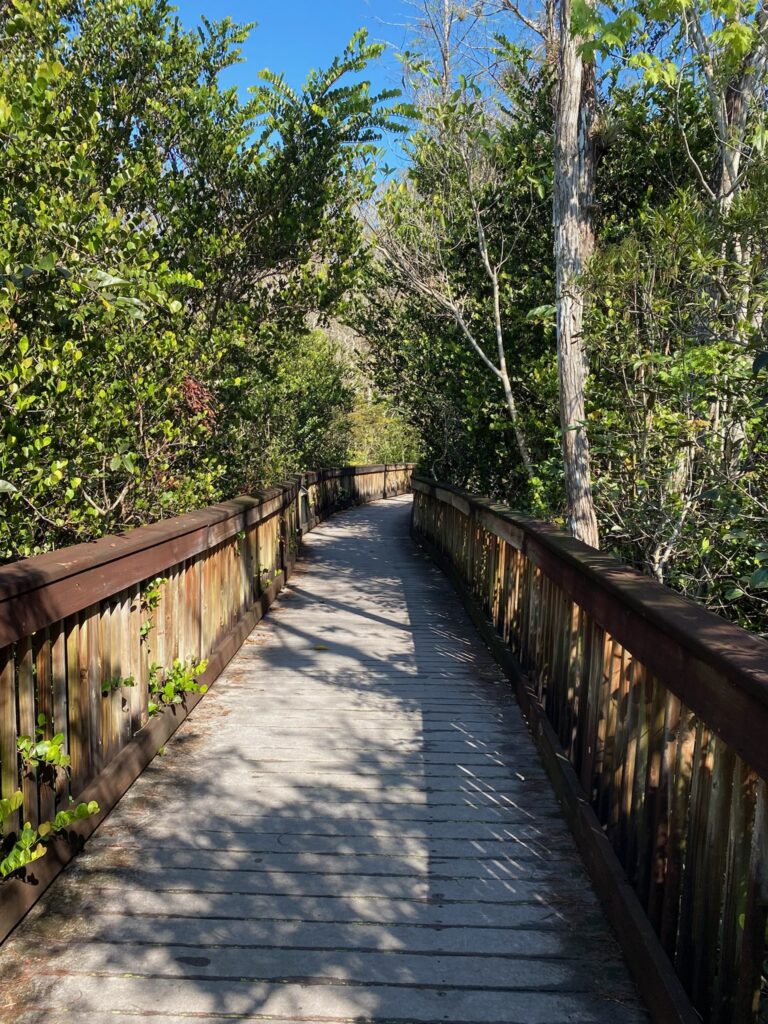
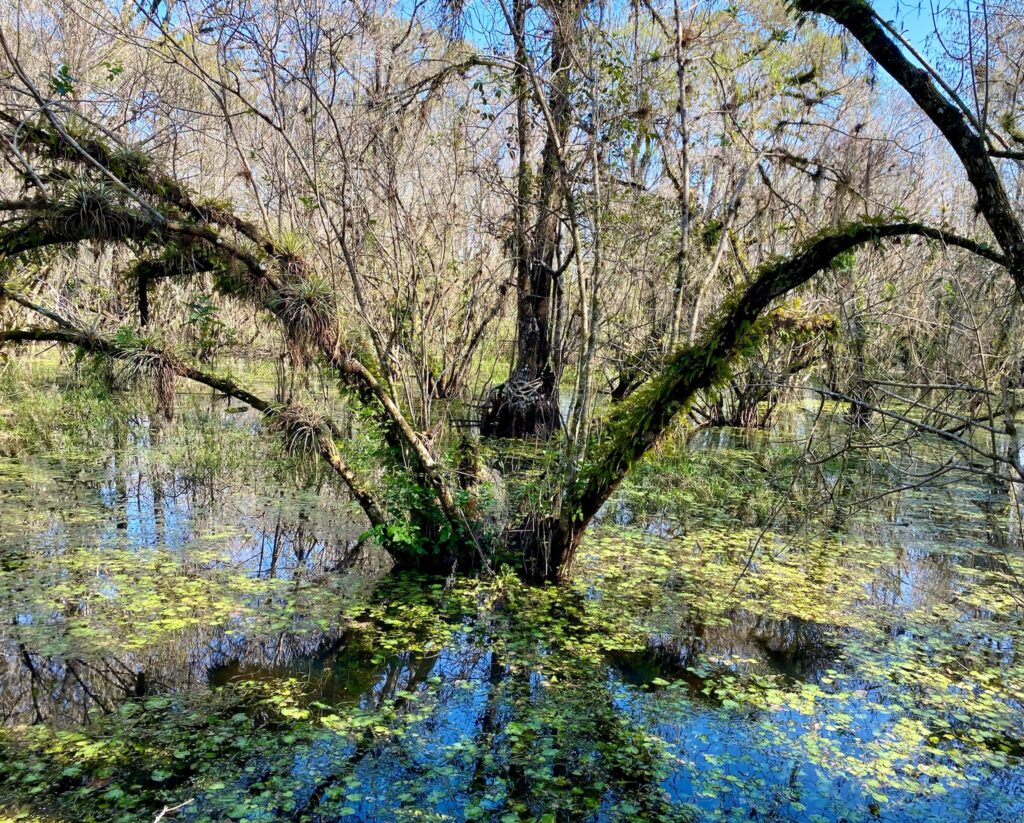
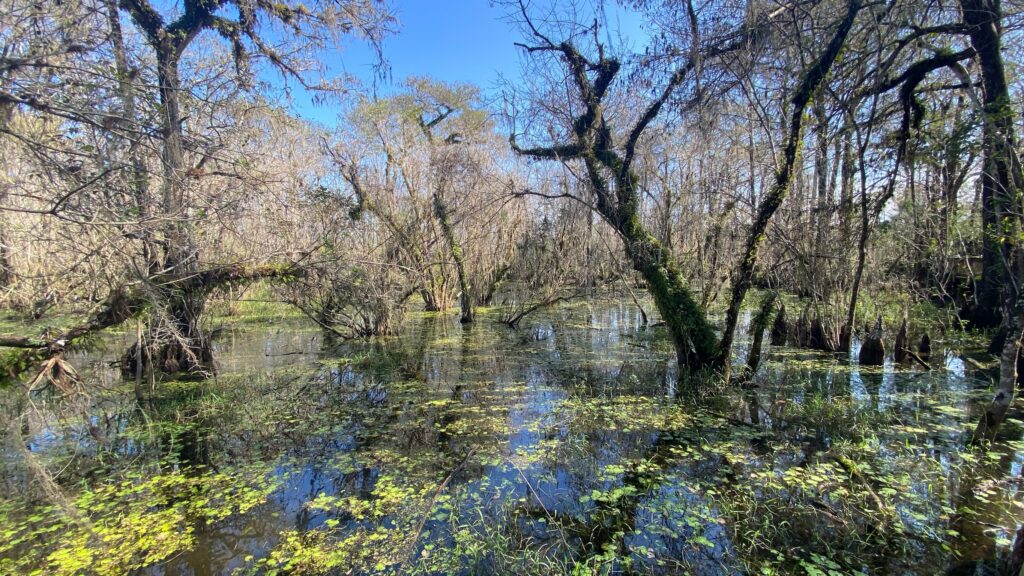
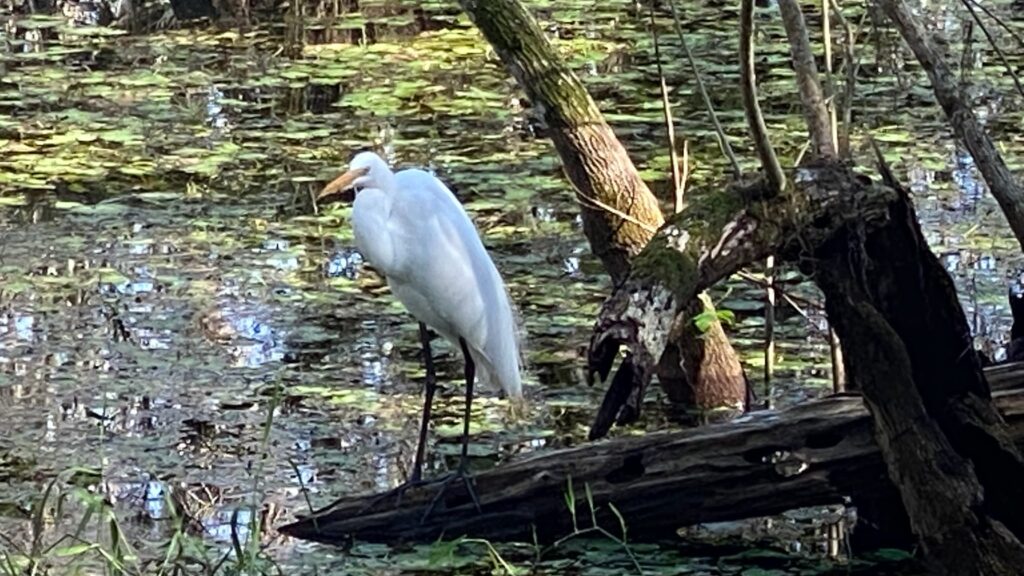
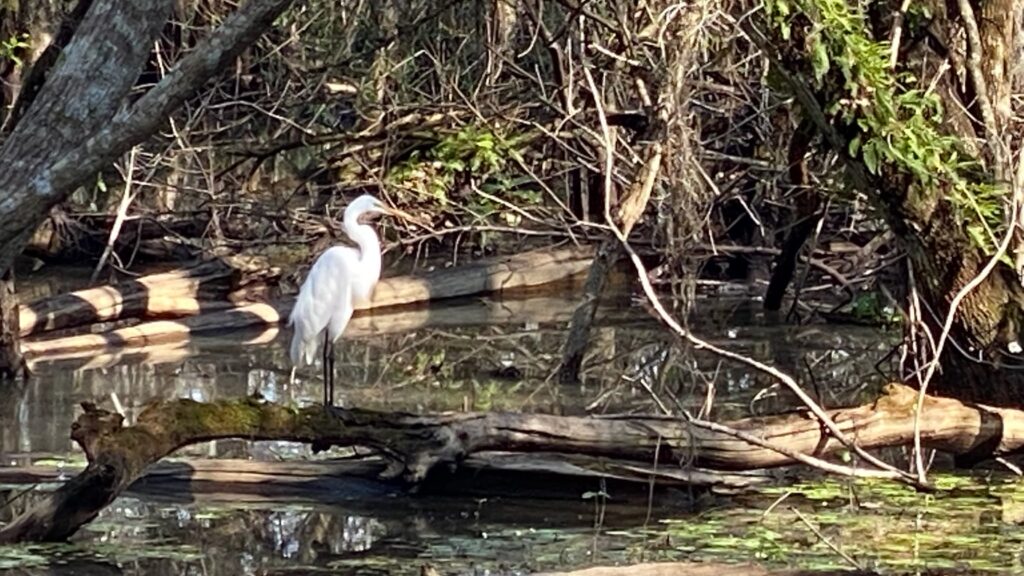
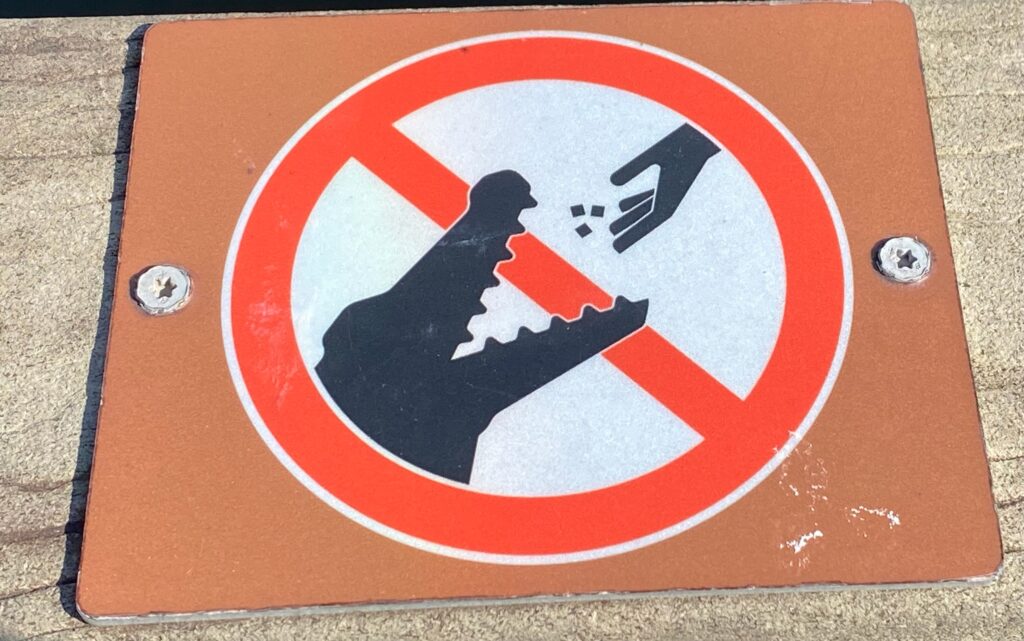
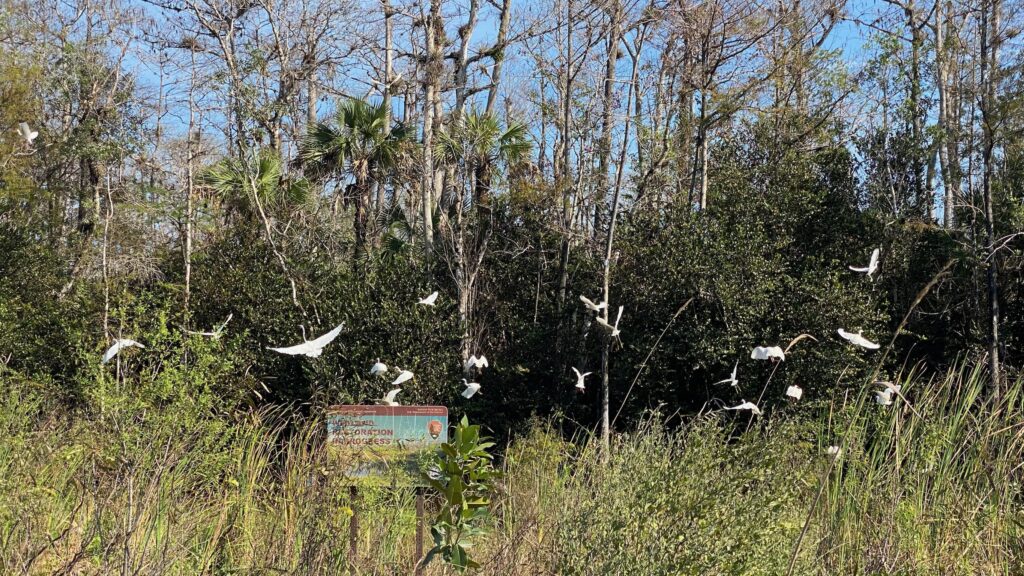

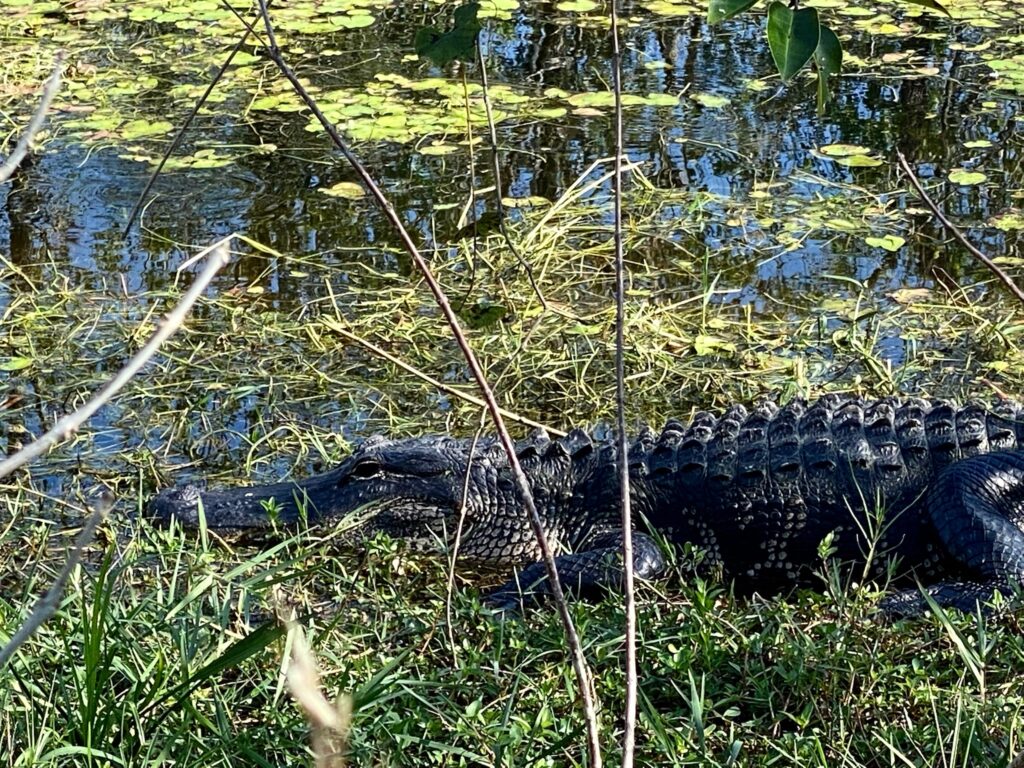
A Peaceful Float
It turns out that China and the United States are the only two countries that have alligators. Next to Louisiana’s population of 2M alligators, Florida takes second place with a respectable 1.3M. There is no doubt that seeing alligators, particularly in their natural habitats, causes the hair to raise on the back of your neck. They’re large. Carnivorous. Somewhat sneaky. They demand a healthy respect for their absolute power in the animal kingdom.
“There is no doubt that seeing alligators, particularly in their natural habitats, causes the hair to raise on the back of your neck. They’re large. Carnivorous. Somewhat sneaky. They demand a healthy respect for their absolute power in the animal kingdom.”
But this should not dissuade you from travel to the area. We are fortunate in the U.S. that these natural habitats are easy to visit. Additionally, and upon further reflection, I have to admit that the more we watched these prehistoric creatures float peacefully through the water or sunbathe on the grassy banks while wading birds gathered food around them in a live-and-let-live vibe without vicious attacks or terrifyingly fast, random movements, the more I started to see these fantastic beasts as rather majestic in their own strange way.
“…I have to admit that the more we watched these prehistoric creatures…, the more I started to see these fantastic beasts as rather majestic in their own strange way.”

